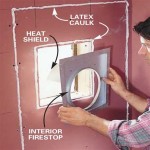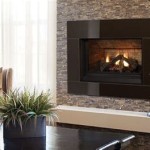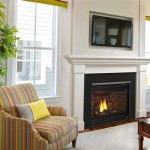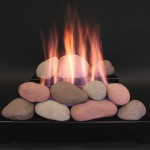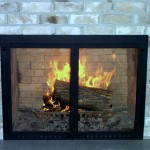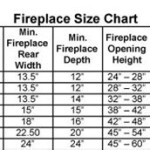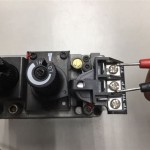Vintage Looking Gas Fireplace Inserts: A Blend of Nostalgia and Modern Convenience
The allure of a crackling fireplace has captivated homeowners for centuries. It provides warmth, ambiance, and a focal point for gathering. However, traditional wood-burning fireplaces can be inefficient, messy, and require significant maintenance. Vintage looking gas fireplace inserts offer a compelling alternative, combining the aesthetic appeal of classic designs with the convenience and efficiency of modern gas technology. These inserts allow homeowners to retain or reimagine the charm of yesteryear while enjoying the benefits of a clean-burning, easily controlled heat source.
The demand for vintage-inspired home decor continues to rise, fueled by a desire for character, authenticity, and a connection to the past. Vintage looking gas fireplace inserts cater to this trend, offering a diverse range of styles that evoke different historical periods and design movements. From the ornate detailing of Victorian-era grates to the streamlined simplicity of Art Deco designs, there is a vintage aesthetic to complement virtually any interior. These inserts are not merely functional heating appliances; they are design elements that contribute to the overall character and ambiance of a room.
This article will delve into the world of vintage looking gas fireplace inserts, exploring their key features, benefits, design considerations, and installation aspects. Understanding these elements is crucial for homeowners seeking to integrate the charm of vintage design with the practicality of modern gas technology.
Key Features and Benefits
Vintage looking gas fireplace inserts offer a multitude of features and benefits that make them an attractive option for homeowners. These advantages range from aesthetic appeal to energy efficiency and ease of use.
One of the primary benefits is the
aesthetic value
. These inserts are designed to replicate the appearance of traditional fireplaces, capturing the essence of different vintage styles. Manufacturers often employ intricate casting techniques, antique finishes, and realistic log sets to create a convincing illusion of a wood-burning fire. The visual appeal of a vintage looking insert can significantly enhance the character and ambiance of a room, adding a touch of elegance and warmth.Energy efficiency
is another crucial advantage. Modern gas fireplace inserts are far more efficient than traditional open fireplaces, which often lose a significant amount of heat up the chimney. Gas inserts are designed to retain and distribute heat more effectively, resulting in lower energy bills and reduced environmental impact. Many models are equipped with features such as thermostatic controls and programmable timers, allowing homeowners to precisely regulate the temperature and optimize energy consumption.Convenience and ease of use
are also compelling factors. Unlike wood-burning fireplaces, gas inserts require minimal maintenance. There is no need to chop wood, build a fire, or clean out ashes. With the simple flick of a switch or the press of a button on a remote control, the fire is ignited and the room is warmed. This ease of use makes gas inserts an ideal option for busy homeowners who want to enjoy the ambiance of a fireplace without the hassle of traditional wood-burning.Safety is also a paramount consideration
. Gas fireplace inserts are designed with safety features such as oxygen depletion sensors (ODS) and automatic shut-off valves. These features help to prevent gas leaks and carbon monoxide poisoning, ensuring the safety of the occupants. Compared to open wood-burning fireplaces, which can pose a fire hazard due to embers and creosote buildup, gas inserts offer a safer and more controlled heating solution.Finally,
versatility in design
is a key strength. Vintage looking gas fireplace inserts are available in a wide range of styles, sizes, and finishes to suit various architectural styles and interior design preferences. Whether a homeowner is looking to replicate the grandeur of a Victorian fireplace or the understated elegance of an Arts and Crafts design, there is likely a gas insert that can meet their needs.Design Considerations for Vintage Aesthetics
Selecting the right vintage looking gas fireplace insert requires careful consideration of various design elements. The goal is to choose an insert that complements the existing décor and enhances the overall aesthetic of the room. Several factors play a critical role in achieving this harmonious integration.
Architectural style
is a primary consideration. The design of the gas insert should be consistent with the architectural style of the home. For example, a Victorian home might benefit from an insert with ornate detailing, a decorative mantel, and a cast iron finish. A bungalow or Craftsman-style home might be better suited to an insert with clean lines, a simple mantel, and a matte finish. Understanding the architectural style of the home will help guide the selection process and ensure a cohesive look.Existing décor
is another important factor. The gas insert should complement the existing furniture, wall colors, and other decorative elements in the room. Consider the color palette, materials, and textures of the existing décor when choosing an insert. For example, if the room features warm, earthy tones, an insert with a bronze or copper finish might be a good choice. If the room has a more modern aesthetic, an insert with a brushed nickel or stainless steel finish might be more appropriate.Mantel design
is crucial for creating a focal point. The mantel is the decorative frame that surrounds the fireplace opening, and it plays a significant role in the overall aesthetic. Vintage looking gas fireplace inserts can be paired with a variety of mantel designs, from elaborate Victorian mantels to simple, rustic mantels. The mantel should be proportional to the size of the fireplace and the room, and it should complement the style of the gas insert. Consider using materials such as wood, stone, or brick to create a mantel that reflects the vintage aesthetic. Salvaged or reclaimed materials can add authenticity and character to the design.Log set realism
is essential for creating a convincing illusion of a wood-burning fire. The quality of the log set can significantly impact the overall aesthetic. Look for log sets that are realistically molded and painted to resemble natural wood. Some manufacturers offer log sets with glowing embers and flickering flames, which further enhance the illusion. Consider the size and arrangement of the logs when making your selection. The log set should be appropriately sized for the fireplace opening and arranged in a way that creates a natural-looking fire.Finishes and materials
play a vital role in achieving a vintage look. Consider the materials and finishes used in the gas insert and the surrounding mantel. Cast iron, brass, copper, and antique finishes can evoke a sense of history and authenticity. Wrought iron grates and decorative accents can further enhance the vintage aesthetic. When selecting finishes, consider the overall color palette of the room and choose finishes that complement the existing décor.Finally,
lighting effects
can contribute to the ambiance. Some gas fireplace inserts offer adjustable lighting effects that can enhance the illusion of a flickering fire. Consider using dimmable lights to create a warm and inviting atmosphere. Accent lighting can also be used to highlight the mantel and other decorative elements in the room.Installation and Safety Considerations
Proper installation of a vintage looking gas fireplace insert is crucial for ensuring safety and optimal performance. It is highly recommended that installation be performed by a qualified professional with experience in gas appliance installation. Improper installation can lead to gas leaks, carbon monoxide poisoning, and other safety hazards.
Professional installation
is essential. A qualified technician will be able to properly connect the gas line, ensure proper ventilation, and verify that the insert is functioning safely and efficiently. They will also be familiar with local building codes and regulations, which can vary depending on the location. Attempting to install a gas fireplace insert without professional assistance can be dangerous and may void the manufacturer's warranty.Ventilation requirements
must be carefully considered. Gas fireplace inserts require proper ventilation to ensure that combustion gases are safely exhausted to the outside. The ventilation system must be properly sized and installed according to the manufacturer's instructions and local building codes. Insufficient ventilation can lead to carbon monoxide buildup, which is a serious health hazard. The type of ventilation system required will depend on the type of gas insert and the existing fireplace configuration. Common ventilation options include direct vent, B-vent, and vent-free systems. A qualified technician will be able to determine the appropriate ventilation system for the specific installation.Gas line connections
must be secure and leak-free. The gas line must be properly connected to the gas insert using appropriate fittings and sealants. All connections must be thoroughly tested for leaks using a gas leak detector. Any leaks must be immediately repaired by a qualified technician. Improper gas line connections can lead to gas leaks, which can pose a fire hazard and cause carbon monoxide poisoning.Clearances to combustibles
must be maintained. Gas fireplace inserts generate heat, and it is important to maintain adequate clearances to combustible materials such as wood framing, drywall, and furniture. The manufacturer's instructions will specify the minimum clearances required for the specific model. Failure to maintain these clearances can lead to a fire hazard. A qualified technician will be able to verify that the clearances are met during installation.Regular maintenance
is essential for ensuring the continued safe and efficient operation of the gas fireplace insert. This includes regular inspections of the gas line, ventilation system, and burner components. The log set should be cleaned periodically to remove dust and debris. The chimney or vent system should be inspected and cleaned annually by a qualified professional to prevent creosote buildup. It is also important to have the gas insert serviced annually by a qualified technician to ensure that all components are functioning properly.Carbon monoxide detectors
are essential safety devices for any home with a gas appliance. Carbon monoxide is a colorless, odorless gas that can be deadly. Carbon monoxide detectors should be installed in accordance with the manufacturer's instructions and local building codes. They should be tested regularly to ensure that they are functioning properly. If a carbon monoxide alarm sounds, evacuate the premises immediately and call emergency services.By carefully considering design elements and prioritizing safety during installation and maintenance, homeowners can enjoy the beauty and warmth of a vintage looking gas fireplace insert for years to come. These inserts offer a compelling combination of classic aesthetics and modern convenience, making them a valuable addition to any home.

Belmont Small Gas Insert

Nordik 34i Kozy Heat Fireplaces

Enviro S Gas Q1 Insert

Belmont Small Gas Insert

Windsor Small Victorian Style Gas Insert

Belmont Small Gas Insert Fireplace Dimensions

Valor Portrait Classic Arch Gas Fireplace Insert Fergus

Valor 530 Portrait Series Gas Fireplace Chadwicks S

Pin By Charlotte Crabtree On Newton Home Fireplace Victorian Gas

Valor G3 5 Gas Fireplace Insert Fergus

